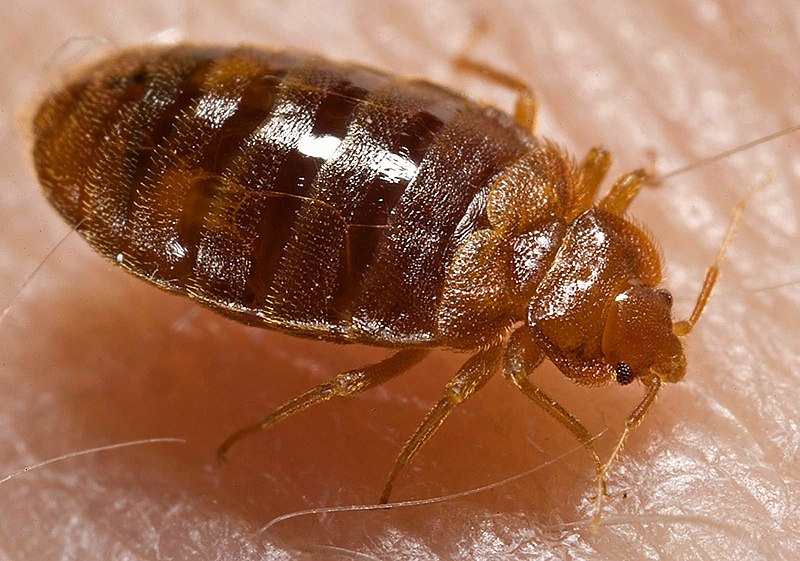Fichye:Bed bug, Cimex lectularius.jpg
Apparence

Dimansyon previzyalizasyon sa a : 800 × 561 piksèl. Lòt rezolisyon yo: 320 × 224 piksèl | 640 × 449 piksèl | 1 024 × 718 piksèl | 1 280 × 898 piksèl | 1 600 × 1 122 piksèl.
Fichye orijinal (1 600 × 1 122 piksèl, gwosè fichye a : 161 kio, tip MIME li ye : image/jpeg)
Istorik fichye a
Klike sou yon dat/yon lè pou wè fichye a jan li te ye nan moman sa a.
| Dat ak lè | Minyati | Grandè yo | Itilizatè | Komantè | |
|---|---|---|---|---|---|
| Kounye a | 17 me 2007 à 14:11 |  | 1 600 × 1 122 (161 kio) | Patho | == Summary == {{Information |Description=ID#: 9822 Description: This 2006 photograph depicted an oblique-dorsal view of a '''bed bug nymph, Cimex lectularius''', as it was in the process of ingesting a blood meal from the arm of a “voluntary” human h |
Itilizasyon fichye sa a
Pa gen okenn paj ki itilize dosye sa a.
Itilizasyon global fichye a
Wiki sa a yo sèvi ak fichye sa a:
- Itilizasyon sou af.wikipedia.org
- Itilizasyon sou an.wikipedia.org
- Itilizasyon sou ar.wikipedia.org
- Itilizasyon sou ary.wikipedia.org
- Itilizasyon sou arz.wikipedia.org
- Itilizasyon sou ast.wikipedia.org
- Itilizasyon sou as.wikipedia.org
- Itilizasyon sou azb.wikipedia.org
- Itilizasyon sou az.wikipedia.org
- Itilizasyon sou be.wikipedia.org
- Itilizasyon sou bg.wikipedia.org
- Itilizasyon sou bjn.wikipedia.org
- Itilizasyon sou bn.wikipedia.org
- Itilizasyon sou bs.wikipedia.org
- Itilizasyon sou ca.wikipedia.org
- Itilizasyon sou ca.wikiquote.org
- Itilizasyon sou ca.wiktionary.org
- Itilizasyon sou ceb.wikipedia.org
- Itilizasyon sou cs.wikipedia.org
- Itilizasyon sou cv.wikipedia.org
- Itilizasyon sou dag.wikipedia.org
- Itilizasyon sou de.wikibooks.org
- Itilizasyon sou din.wikipedia.org
- Itilizasyon sou el.wikipedia.org
- Itilizasyon sou eml.wikipedia.org
- Itilizasyon sou en.wikipedia.org
- Itilizasyon sou en.wikinews.org
- Itilizasyon sou en.wiktionary.org
Gade plis itilizasyon global fichye sa a.

